CVT for a Small Electric Vehicle Using Centrifugal Belt Pulley
Abstract
:1. Introduction
2. Principle of Shift Motion of a Centrifugal Belt Pulley
2.1. Principle of the Centrifugal Belt-Type CVT
Design Condition of Centrifugal Belt-Type CVT
3. Centrifugal Belt Slide Plate Design Simulation
Analysis of the Behavior of Push Piece
4. Centrifugal Belt Pulley
5. Centrifugal Belt Pulley CVT Performance Tester
6. Conclusions
- (1)
- The reduction ratio was set at 3:1 to provide the initial driving force of a small electric vehicle equipped with a 10:1 reducer.
- (2)
- Two types of plate rail grooves were designed so that multiple push pieces could rotate simultaneously. The behavior of the push part of a rail groove with a normal curve and a spline curve was analyzed using a Fortran program.
- (3)
- It was verified that the rail groove using the spline curve showed excellent acceleration and responsiveness.
- (4)
- The push piece’s spline curve structure was designed for durability and safety.
- (5)
- The shape and structure of the plate were designed to be compact and lightweight, considering the mileage of the vehicle. The housing, which protects against external shocks, was designed and manufactured for small CVTs with centrifugal belt pulleys, considering the distance between the axles.
- (6)
- A performance tester equipped with a drive motor was manufactured, and a control circuit was configured in the main controller to measure the rotational speed and output values. The power-transmission efficiency of the final centrifugal belt pulley CVT was verified using this tester.
- (7)
- Once the performance of the CVT was confirmed by the performance tester, the efficiency was confirmed by evaluating the rotation speed of the output versus the input and the corresponding gear ratio.
- (8)
- The durability of the developed transmission was confirmed using a driving tester manufactured to simulate bad road conditions.
- (9)
- A sudden belt slip occurred due to the regenerative braking operation, due to the characteristics of the traction motor in a downhill or elastic driving condition.
- (10)
- If regenerative braking is required, then it should be possible to stop the motor without using a CVT.
Author Contributions
Funding
Conflicts of Interest
Abbreviations
| CVT | Continuously variable transmission |
| TCU | Transmission control unit |
| HEV | Hybrid electric vehicle |
References
- Shin, Y.I.; Shin, S.H.; Oh, T.I.; Suh, J.S.; Song, C.K. Mass Reduction of Transmission Gears for Commercial Vehicles. J. Korean Soc. Precis. Eng. 2012, 29, 319–323. [Google Scholar] [CrossRef]
- Youm, K.W.; Ham, S.H.; Oh, S.H. A Study on the Shift Motor Driving System Optimization of 4-WD Power Transformation Device. J. Korean Soc. Precis. Eng. 2013, 30, 1187–1192. [Google Scholar] [CrossRef] [Green Version]
- Lee, I.K.; Moon, H.H.; Kim, J.J. Study for Examples of Fire Including Friction with Automotive Clutch, Manual Transmission and Tire System. J. Korean Inst. Gas 2015, 19, 49–53. [Google Scholar] [CrossRef] [Green Version]
- Youm, K.W.; Ham, S.H. Study on Shift characteristic of Small reducer using Eccentric arm. J. Korea Acad. Ind. Coop. Soc. 2017, 18, 609–614. [Google Scholar] [CrossRef]
- Park, K.H.; Jung, S.H.; Wee, H.; Lee, G.S.; Cho, S.H. A Study on the Fault Detection of Auto-transmission Using the Vibrational Characteristics of Roller Bearings. J. Korean Soc. Noise Vib. Eng. 2009, 19, 268–2736. [Google Scholar]
- Kim, J.Y.; Yim, C.Y.; Lim, W.S. Development of Shift-By-Wire System for an Automatic Transmission Equipped Vehicle. J. Korean Soc. Automot. Eng. 2005, 15, 41–46. [Google Scholar]
- Kwon, H.S. Assemblability Analysis of the Kinematic Configurations of Ravigneaux-Type Automatic Transmissions. J. Korean Soc. Manuf. Process Eng. 2019, 18, 49–58. [Google Scholar] [CrossRef]
- Julió, G.; Plante, J.S. An experimentally-validated model of rubber-belt CVT mechanics. Mech. Mach. Theory 2011, 46, 1037–1053. [Google Scholar] [CrossRef]
- Kim, S.M.; Zheng, C.; Lim, W.S.; Cha, S.W. Performance Analysis of the Rubber Belt type CVT System. J. Korean Soc. Manuf. Technol. Eng. 2011, 20, 376–381. [Google Scholar]
- Kim, G.S.; Kwon, Y.W. The Development of Gradient Response CVT for a Small Size Electric Vehicle. J. Korean Soc. Power Syst. Eng. 2015, 19, 33–38. [Google Scholar] [CrossRef]
- Yang, Y.; He, X.; Zhang, Y.; Qin, D. Regenerative Braking Compensatory Control Strategy Considering CVT Power Loss for Hybrid Electric Vehicles. Energies 2018, 11, 497. [Google Scholar] [CrossRef] [Green Version]
- Luo, Y.; Baddour, N.; Liang, M. Dynamical Modeling of Gear Transmission Considering Gearbox Casing. Conf. Mech. Vib. Noise 2018, 8, 24–30. [Google Scholar] [CrossRef]
- Karhula, H.; Nicolai, M.; Desmet, W. Exhaustive Synthesis and Analysis of Automotive 2-Stage Planetary Transmission Designs. Int. Power Transm. Gearing Conf. 2019, 10, 37–48. [Google Scholar] [CrossRef]
- Manring, N.D.; Al-Ghrairi, T.S.; Vermillion, S.D. Designing a Hydraulic Continously Variable-Transmission (CVT) for Retrofitting a Rear-Wheel Drive Automobile. J. Mech. Des. 2013, 135, 3–13. [Google Scholar] [CrossRef]
- Ryu, W.; Kim, H. Ratio Control of CVT by Considering the CVT System Efficiency. J. Korean Soc. Automot. Eng. 2006, 14, 157–163. [Google Scholar]
- Zhu, H.; Zhang, Y.; Wang, Y. Study on the Slip Rate of CVT in Un-steady States. IFAC-PapersOnLine 2018, 51, 343–346. [Google Scholar] [CrossRef]
- Dwivedula, R.V.; Pagilla, P.R. Effect of Compliance and Backlash on the Output Speed of a Mechanical Transmission System. J. Dyn. Syst. Meas. Control 2012, 134, 10–18. [Google Scholar] [CrossRef]
- Xiang, C.L.; Huang, Y.; Liu, H. Response Sensitivity and the Assessment of Nonlinear Vibration Using a Nonlinear Lateral–Torsional Coupling Model of Vehicle Transmission System. J. Vib. Acoust. 2015, 137, 13–23. [Google Scholar] [CrossRef]
- Moriwaki, I.; Nishiyama, M. Gear Noise Diagnosis System for Automobile Transmission Using Artificial Intelligence: Improvement of Judgement Performance. Int. Power Transm. Gearing Conf. 2000, 6, 695–700. [Google Scholar] [CrossRef]

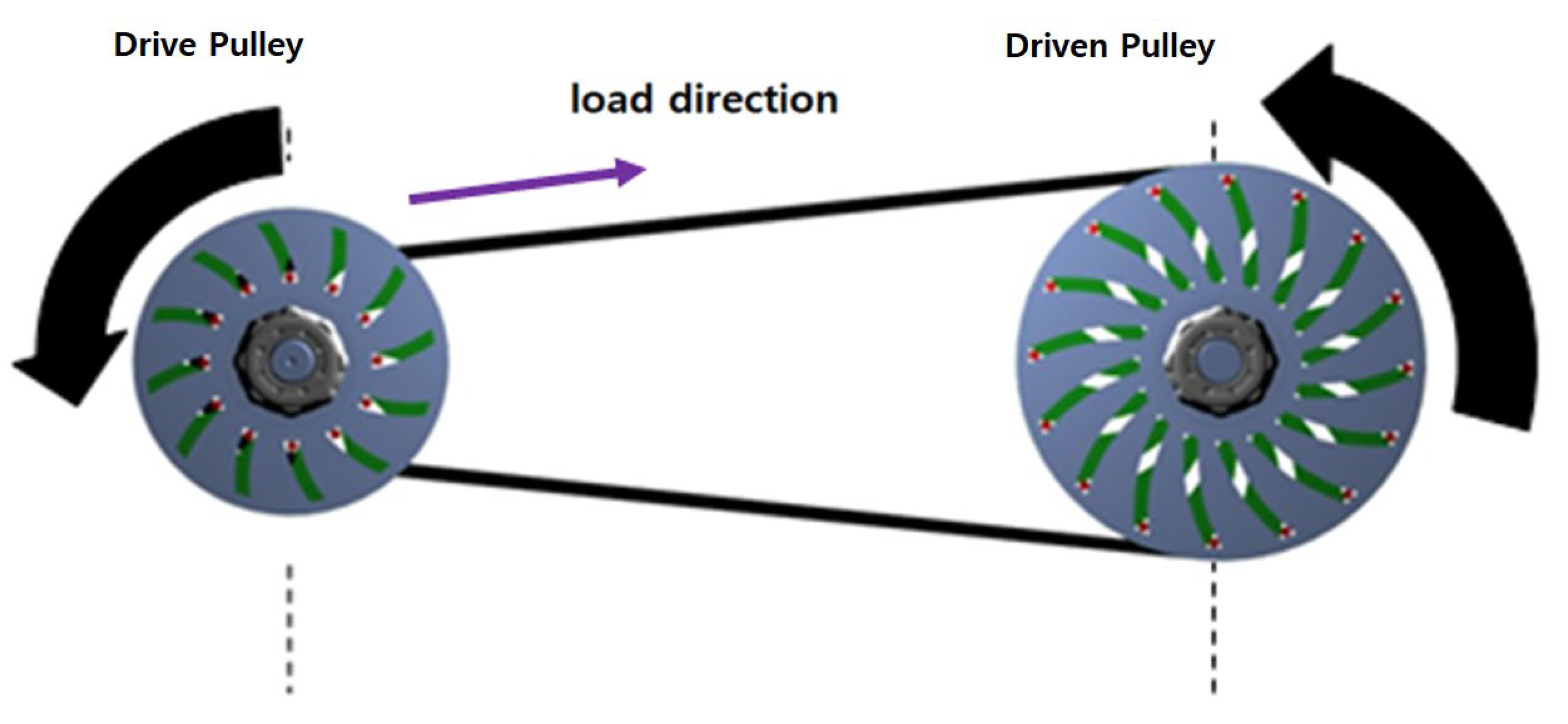


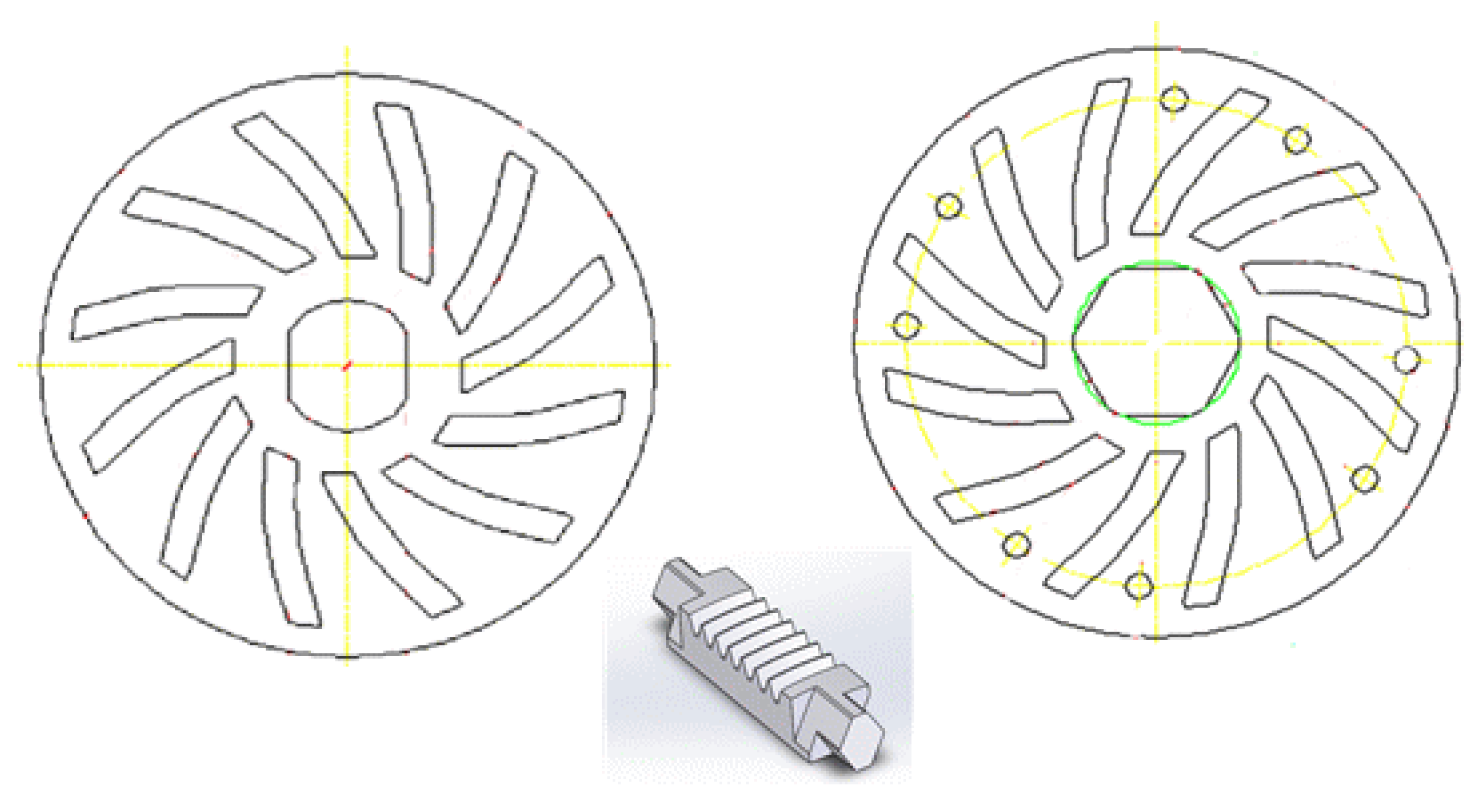

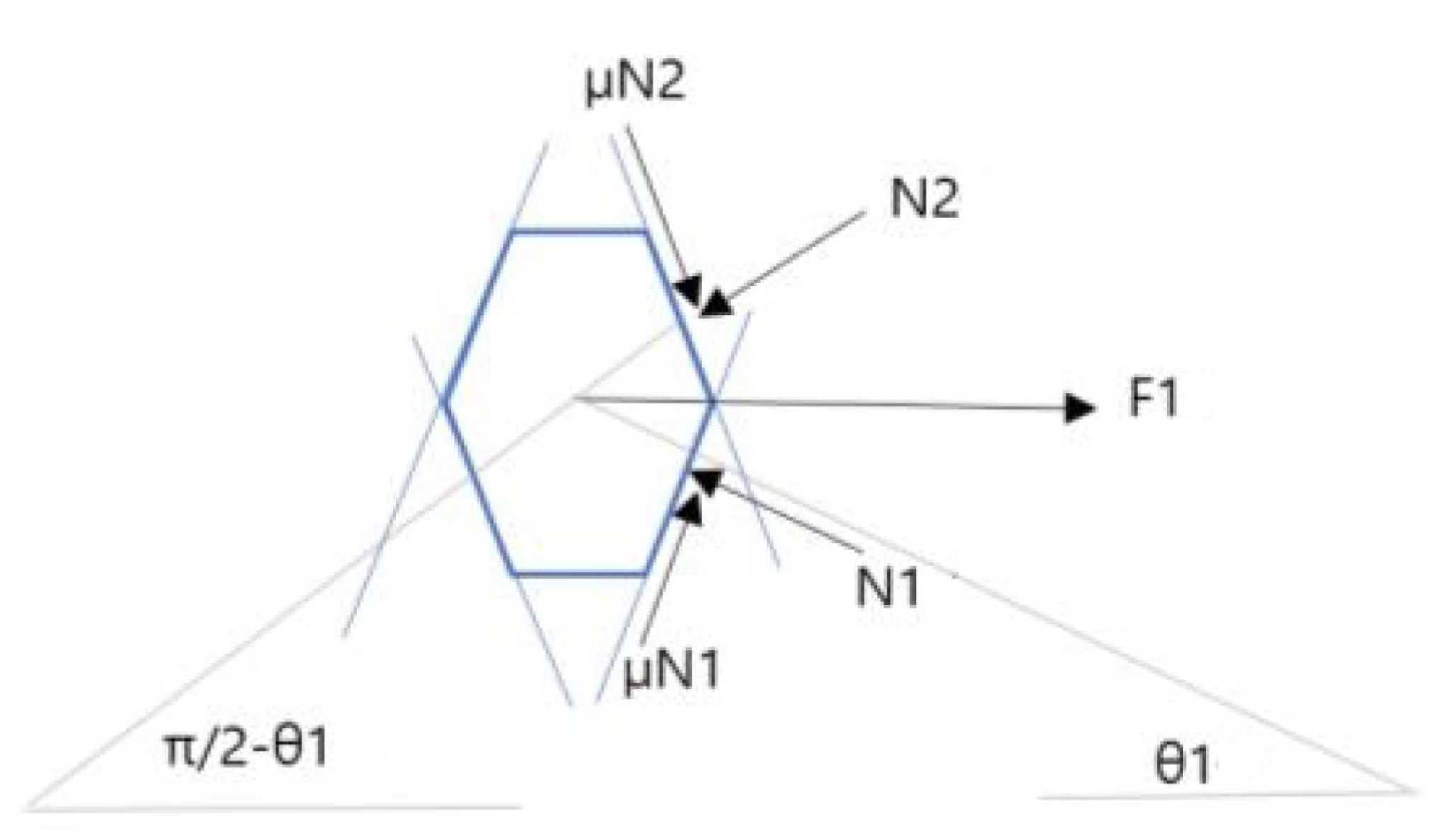

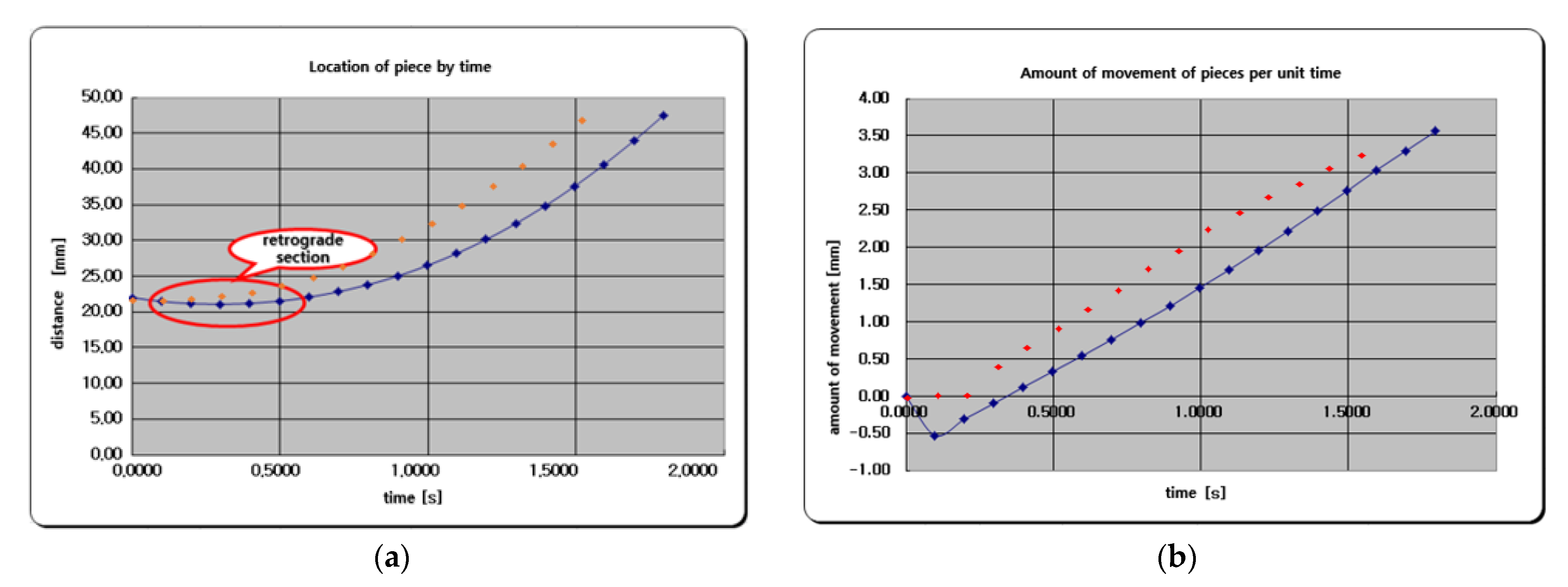
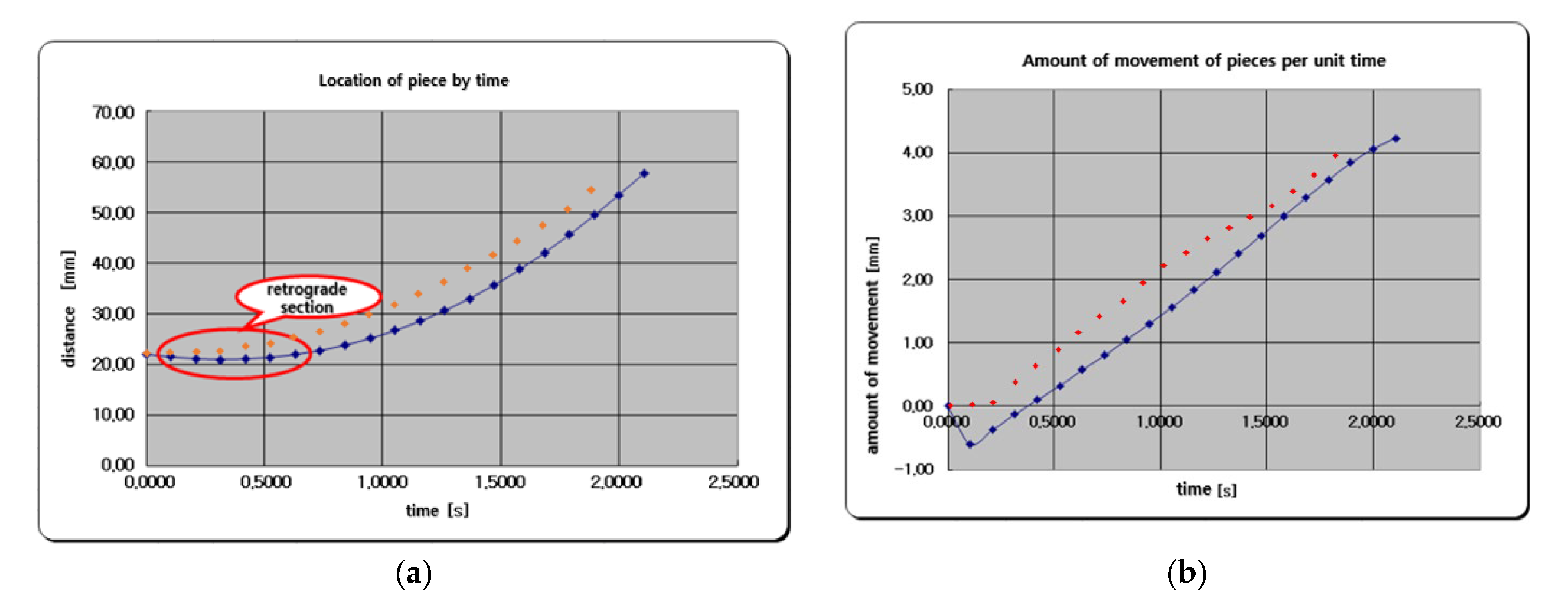
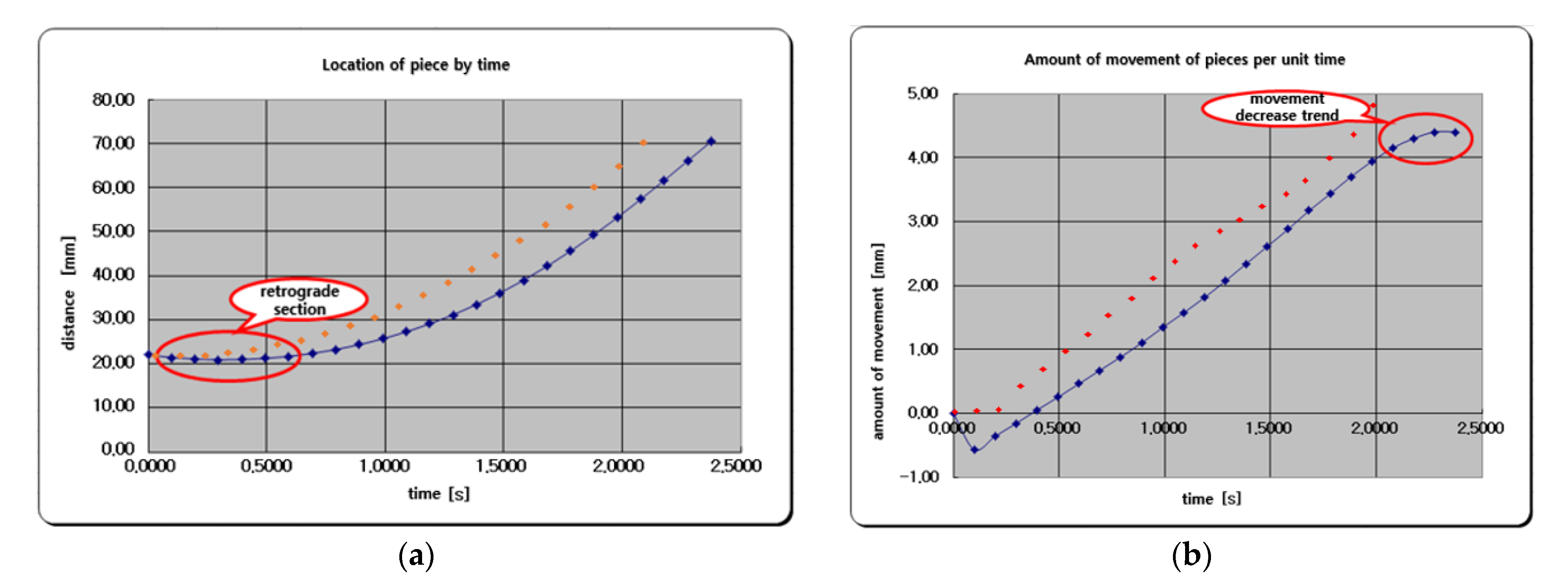
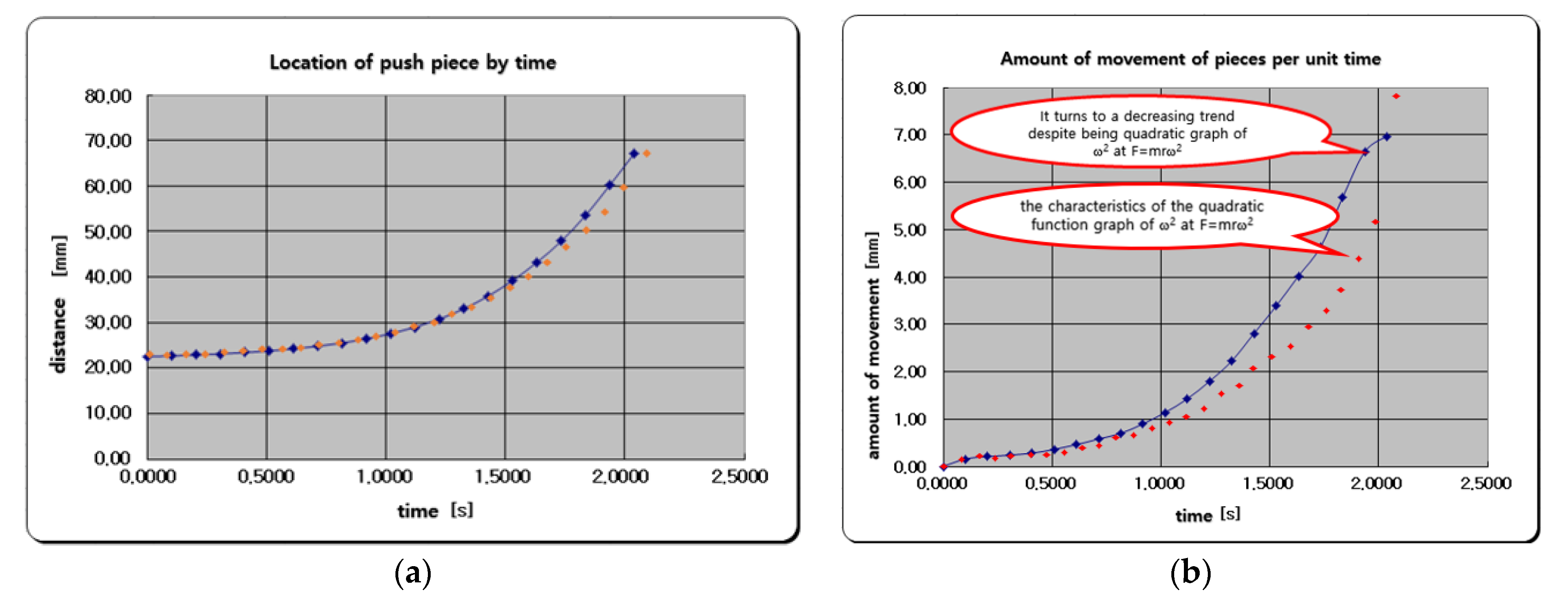

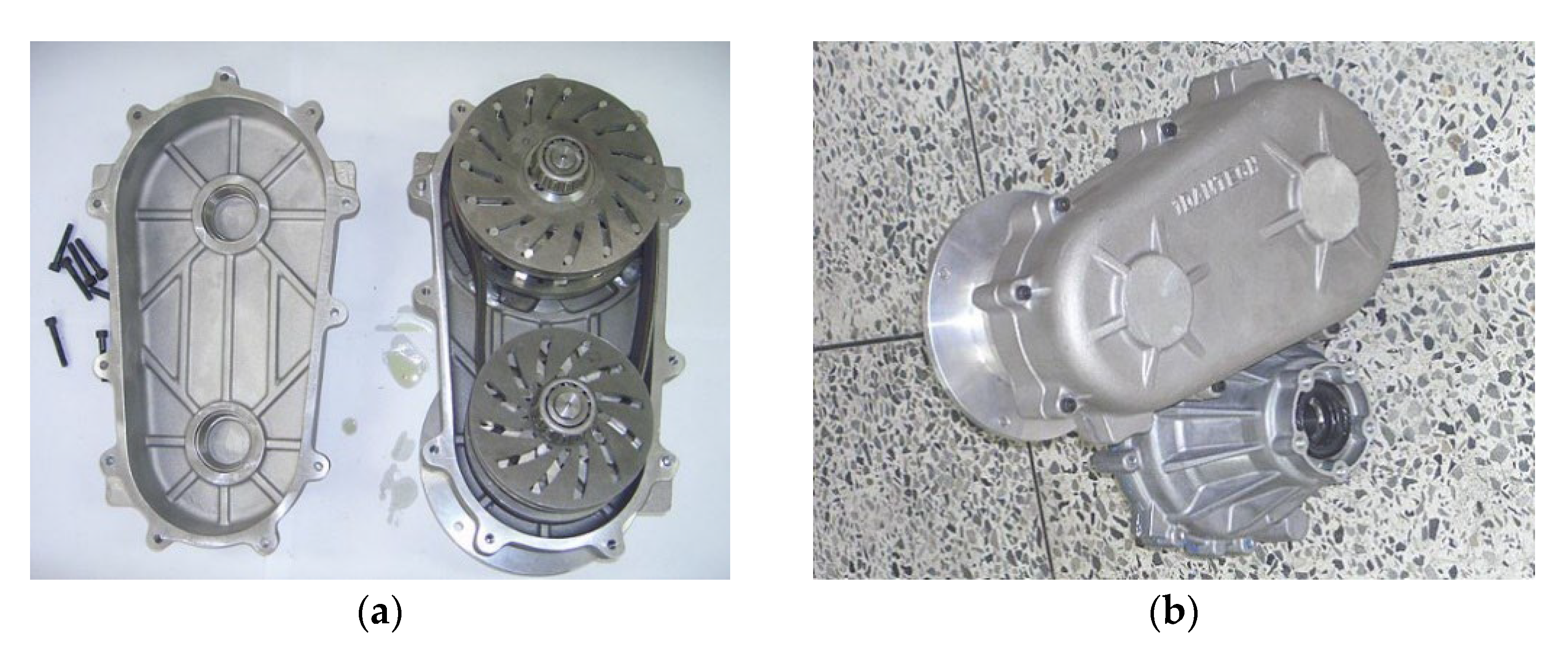
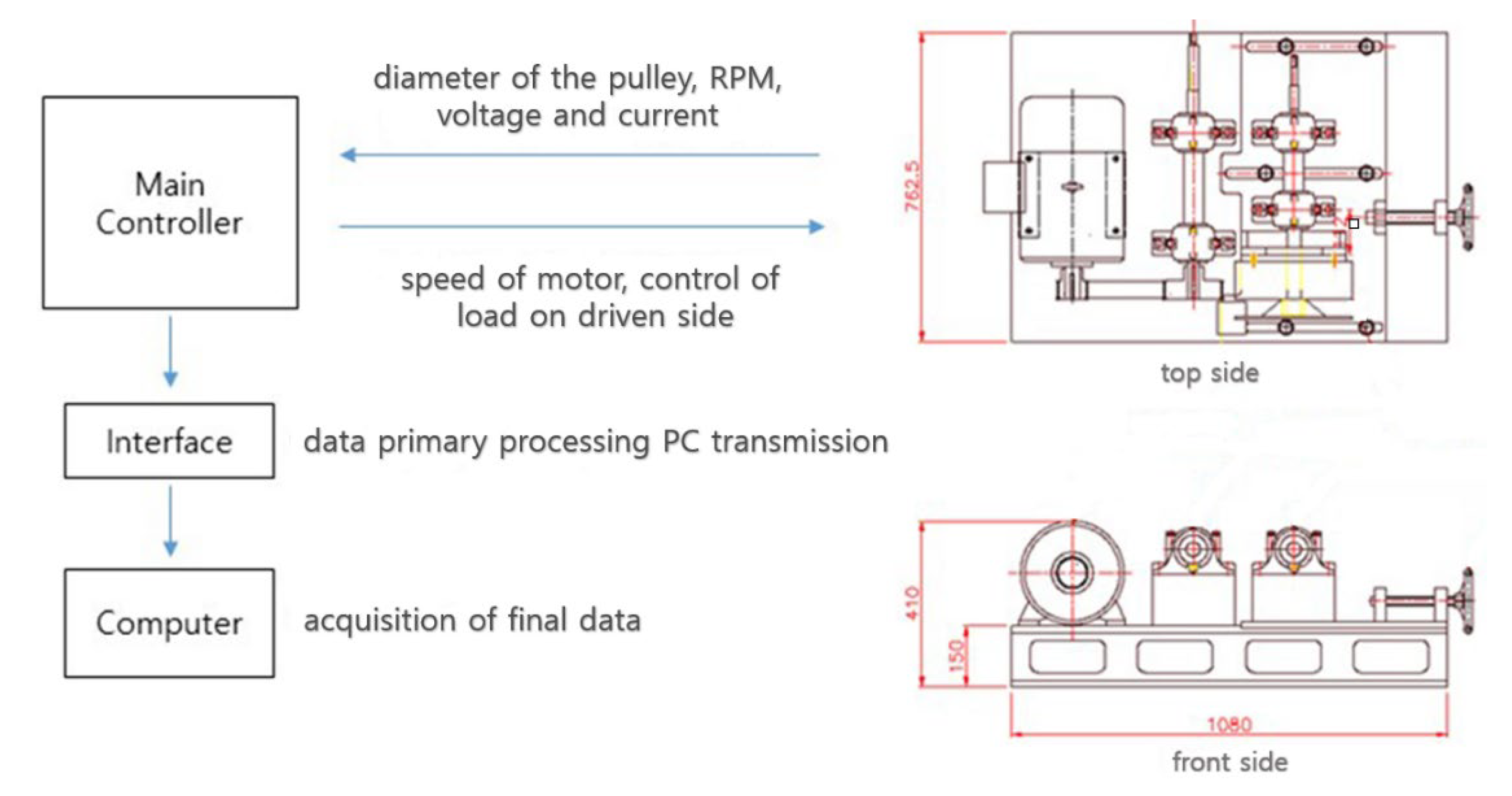
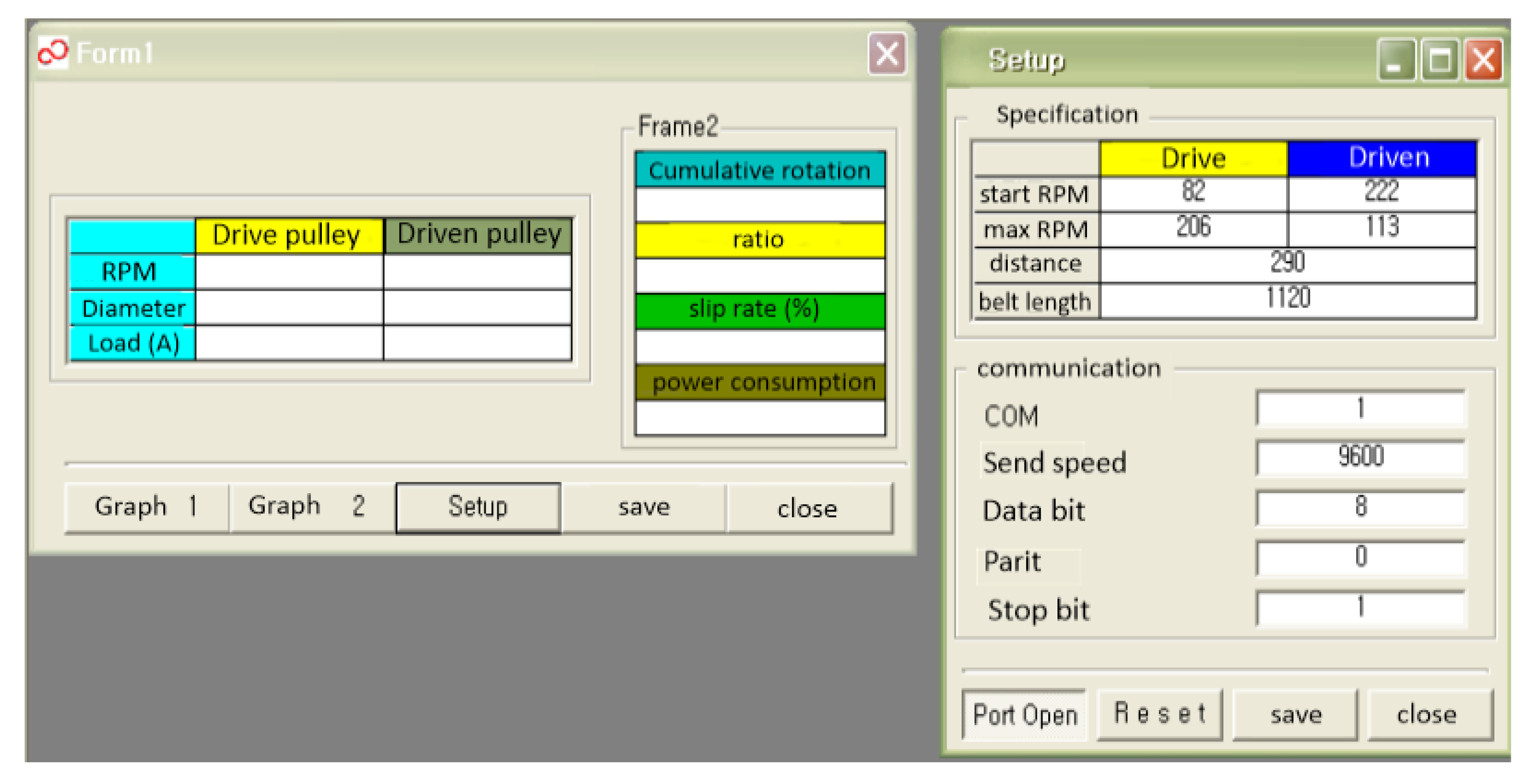
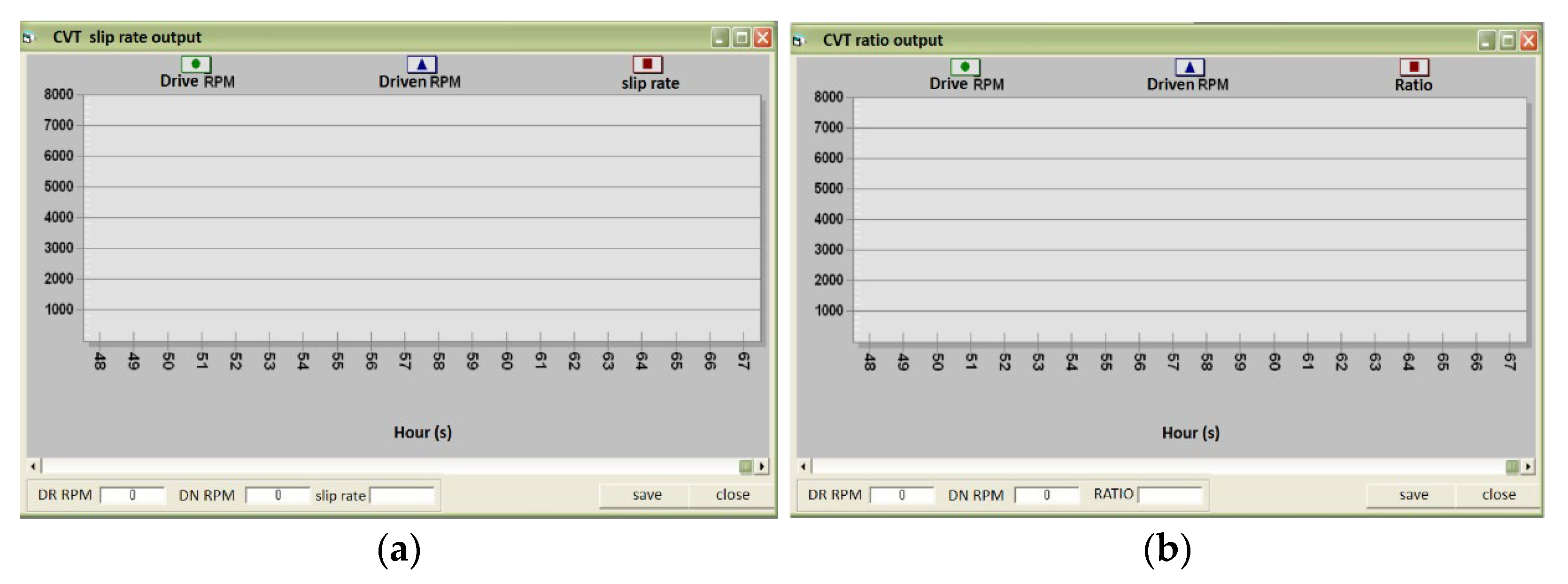
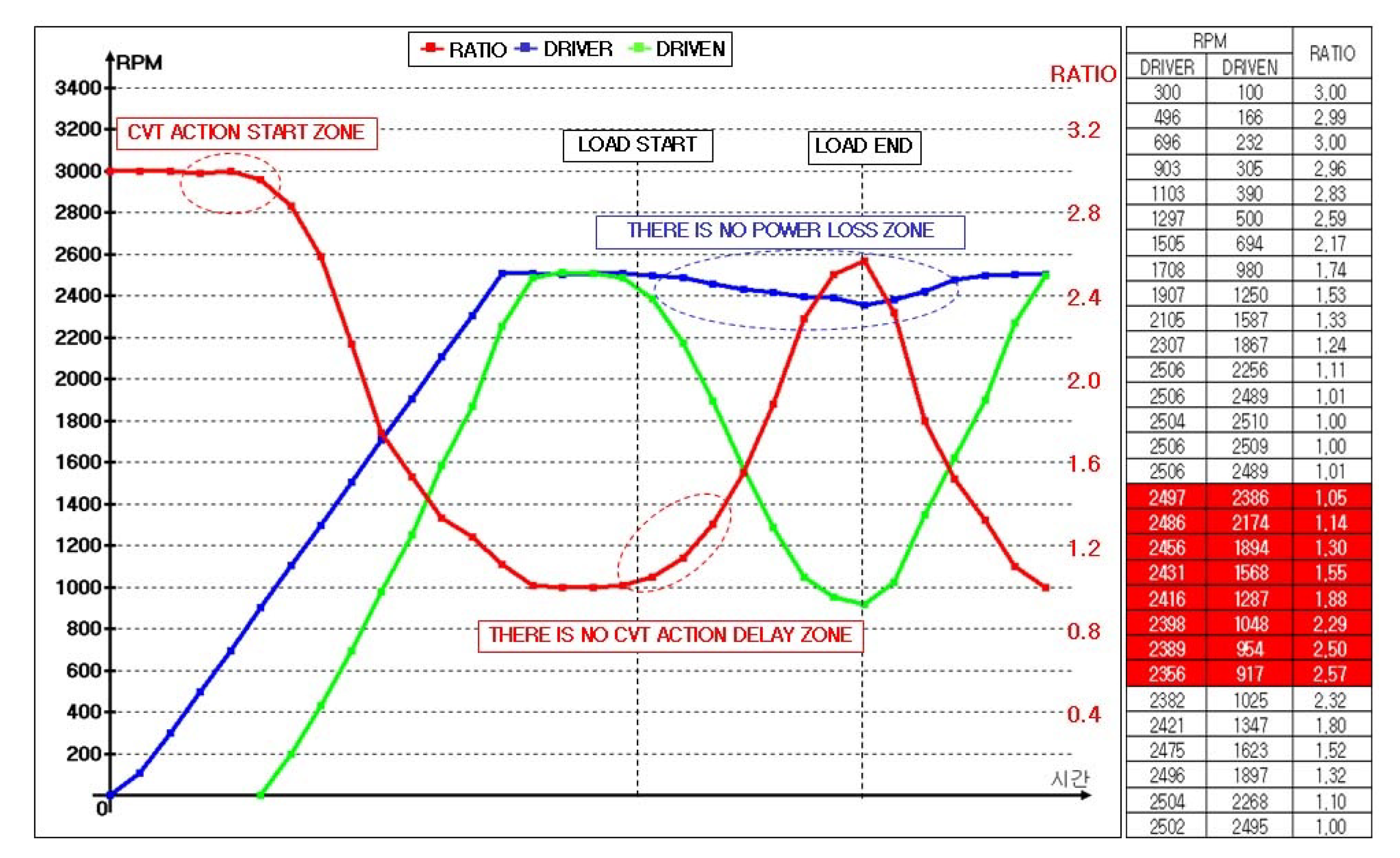
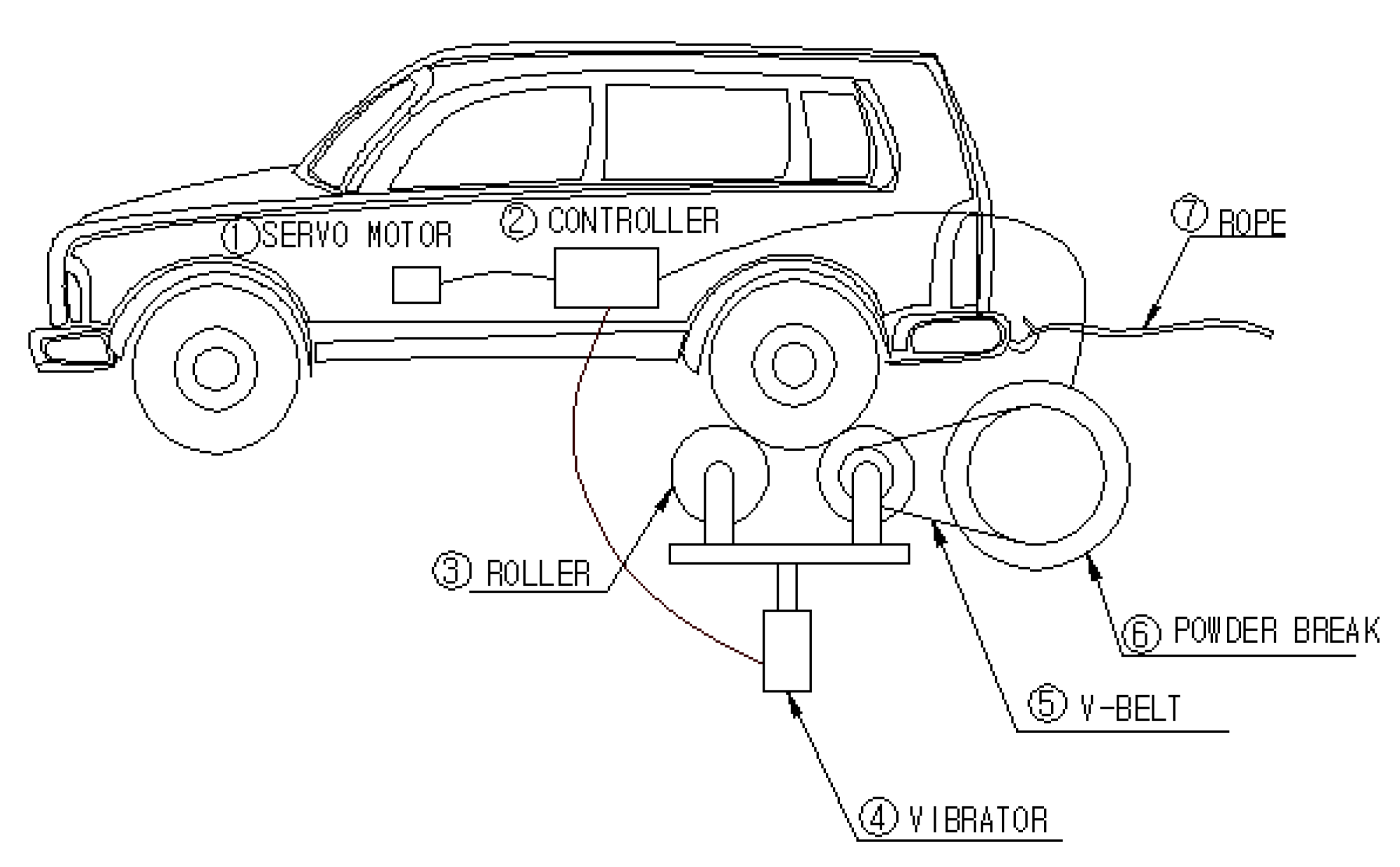
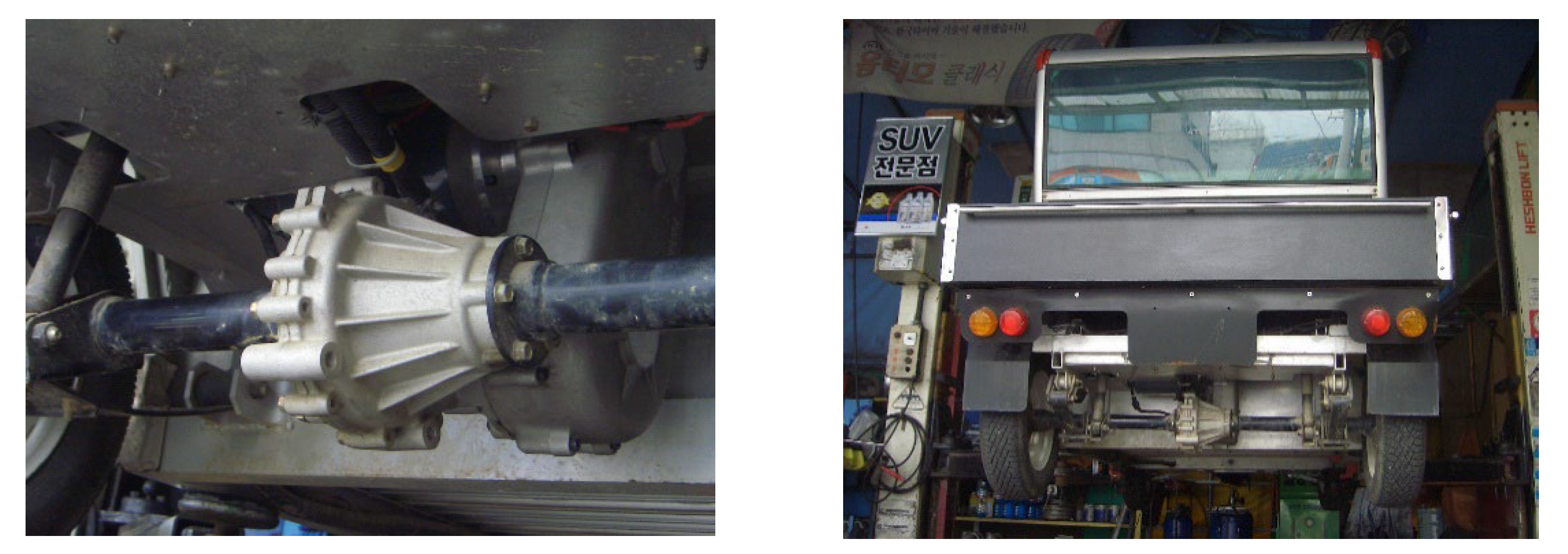
| Belt Length [mm] | Center Distance [mm] | [DR] Pulley Diameter [mm] | [DR] RPM | [DR] Centrifugal Force [N.m] | [DR] Pulley Diameter [mm] | [DR] Centrifugal Force [N.m] |
|---|---|---|---|---|---|---|
| 692 | 175 | 52 | 1000 | 157.8 | 156.0 | 47.6 |
| 692 | 175 | 58 | 1100 | 212.9 | 151.8 | 73.7 |
| 692 | 175 | 64 | 1200 | 279.6 | 147.5 | 109.9 |
| 692 | 175 | 70 | 1300 | 359.0 | 143. | 159.1 |
| 692 | 175 | 76 | 1400 | 452.0 | 138.3 | 224.9 |
| 692 | 175 | 82 | 1500 | 559.8 | 133.4 | 311.5 |
| 692 | 175 | 88 | 1600 | 683.6 | 128.4 | 424.4 |
| 692 | 175 | 94 | 1700 | 824.3 | 123.1 | 570.1 |
| 692 | 175 | 100 | 1800 | 983.1 | 117.6 | 757.3 |
| 692 | 175 | 109 | 1900 | 1193.9 | 108.8 | 1082.7 |
Publisher’s Note: MDPI stays neutral with regard to jurisdictional claims in published maps and institutional affiliations. |
© 2022 by the authors. Licensee MDPI, Basel, Switzerland. This article is an open access article distributed under the terms and conditions of the Creative Commons Attribution (CC BY) license (https://creativecommons.org/licenses/by/4.0/).
Share and Cite
Do, H.-j.; Oh, S.-h. CVT for a Small Electric Vehicle Using Centrifugal Belt Pulley. Energies 2022, 15, 8800. https://doi.org/10.3390/en15238800
Do H-j, Oh S-h. CVT for a Small Electric Vehicle Using Centrifugal Belt Pulley. Energies. 2022; 15(23):8800. https://doi.org/10.3390/en15238800
Chicago/Turabian StyleDo, Hyung-jin, and Se-hoon Oh. 2022. "CVT for a Small Electric Vehicle Using Centrifugal Belt Pulley" Energies 15, no. 23: 8800. https://doi.org/10.3390/en15238800
APA StyleDo, H. -j., & Oh, S. -h. (2022). CVT for a Small Electric Vehicle Using Centrifugal Belt Pulley. Energies, 15(23), 8800. https://doi.org/10.3390/en15238800






